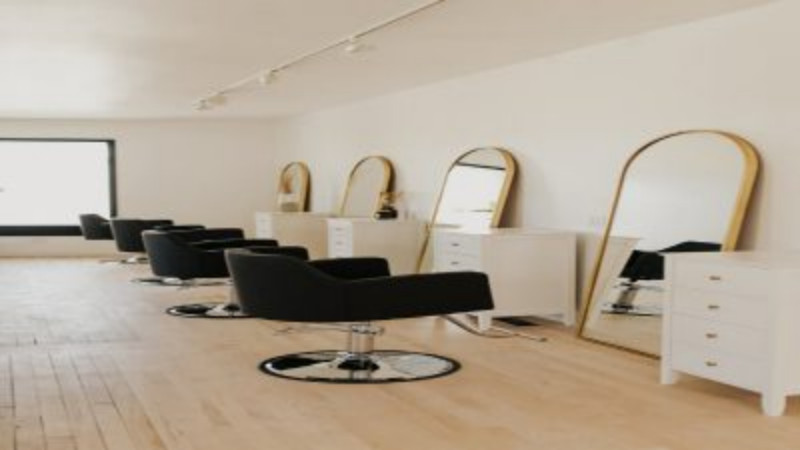Hair loss is a common concern for both men and women, and while many people think of hair transplants as the only solution, there are several effective non-surgical hair restoration methods available today. Non-surgical treatments offer a less invasive, quicker, and often more affordable option for those seeking to restore their hair and regain confidence. These treatments work with your natural hair growth process and can deliver impressive results without the need for surgery.
In this blog, we will dive into the science behind non-surgical hair restoration, what you can expect from these treatments, and how they compare to traditional hair transplant alternatives. If you’re looking for a solution to hair thinning or hair loss in Scottsdale, keep reading to explore all your options.
What Is Non-Surgical Hair Restoration?
Non-surgical hair restoration refers to a variety of treatments designed to stimulate hair growth, restore volume, and improve the overall appearance of thinning or balding hair. These methods do not require incisions, stitches, or long recovery times, making them a popular choice for those who want to avoid the risks and recovery associated with surgery.
There are several types of non-surgical hair restoration treatments, including Platelet-Rich Plasma (PRP) therapy, low-level laser therapy (LLLT), and hair systems that integrate with natural hair. These techniques are designed to stimulate the scalp and encourage new hair growth by using the body’s natural healing processes.
Key Benefits of Non-Surgical Hair Restoration
- Minimal downtime: Unlike traditional hair transplants, non-surgical treatments require little to no recovery time.
- Less invasive: No need for surgery or scalp incisions, reducing the risks associated with invasive procedures.
- Customized results: Non-surgical treatments can be tailored to each individual’s hair loss patterns and goals.
- Effective for various stages of hair loss: Whether you are experiencing mild thinning or more advanced hair loss, non-surgical options can be adjusted for your needs.
For more details on hair restoration in Scottsdale, consult a trusted hair and beauty salon in Scottsdale to learn about the treatments available in your area.
The Science Behind Platelet-Rich Plasma (PRP) Therapy
One of the most popular non-surgical treatments for hair restoration is Platelet-Rich Plasma (PRP) therapy. This treatment uses the patient’s own blood to stimulate hair growth. Here’s how it works:
1. Blood Drawn from the Patient
PRP therapy begins by drawing a small amount of the patient’s blood, usually from the arm.
2. Processing the Blood
The blood is placed into a centrifuge, which spins the blood at high speeds to separate the components. The result is a concentration of platelets, which are rich in growth factors that promote healing and tissue regeneration.
3. Injection Into the Scalp
The PRP is then injected into the scalp in areas experiencing thinning or hair loss. The growth factors in the PRP stimulate the hair follicles, encouraging new hair growth and improving the health of existing hair.
What to Expect:
PRP therapy is a non-invasive treatment that typically takes around 30 to 45 minutes. It is performed in a series of sessions, with each session spaced about a month apart. Results vary from patient to patient, but many people begin to notice thicker, healthier hair after three to six months.
PRP therapy is ideal for those experiencing early to moderate stages of hair thinning, as it works by stimulating dormant hair follicles to produce new hair.
Low-Level Laser Therapy (LLLT) for Hair Restoration
Another non-surgical hair restoration option is low-level laser therapy (LLLT). This treatment uses specific wavelengths of light to stimulate the scalp and promote hair growth. Here’s how LLLT works:
1. Laser Light Applied to the Scalp
LLLT devices, such as handheld devices or laser caps, emit low-level laser light onto the scalp. The light energy penetrates the scalp and stimulates the hair follicles, encouraging them to enter the growth phase.
2. Stimulating Cellular Activity
The light activates cellular activity within the hair follicles, increasing blood flow and oxygen supply. This revitalizes the hair follicles and enhances the production of keratin, a protein that helps form hair strands.
What to Expect:
LLLT treatments are typically painless and non-invasive. Sessions are generally short, lasting around 15 to 30 minutes, and can be done in a clinic or at home with a laser cap. For optimal results, LLLT is often recommended to be done several times a week, with improvements visible after several months of consistent use.
LLLT is an effective solution for those dealing with hair thinning or early-stage hair loss. It is often used in combination with other treatments, such as PRP therapy, for maximum benefit.
Hair Systems: A Non-Invasive Alternative to Hair Transplants
For those who are not yet ready for a surgical hair transplant but want to restore the appearance of a full head of hair, hair systems offer a non-surgical solution. Hair systems are custom-made to match the color, texture, and volume of your natural hair. These systems are designed to integrate seamlessly with your existing hair, covering areas of thinning or baldness.
Key Features:
- Custom Fit: Hair systems are created to match your natural hair and blend in flawlessly.
- Non-Invasive: No surgery or needles are involved, making this a quick and easy option for hair restoration.
- Versatile Styling: Hair systems can be styled just like natural hair, allowing for a variety of looks.
While hair systems are a great short-term solution for those with more advanced hair loss, they do require regular maintenance and replacement.
Choosing the Right Non-Surgical Hair Restoration Option
The best non-surgical hair restoration method for you depends on several factors, including the severity of your hair loss, your hair type, and your desired results. Here are some factors to consider when choosing a treatment:
- Hair Type: Different treatments work better for different hair types. For example, PRP therapy is great for stimulating hair growth in people with thinning hair, while LLLT may be more effective for people looking to enhance existing hair.
- Severity of Hair Loss: Non-surgical options are often most effective in the early to moderate stages of hair loss. If you’re dealing with more severe hair loss, a combination of treatments may be recommended.
- Maintenance: Consider how much time and effort you’re willing to invest in your hair restoration. Treatments like hair systems require more maintenance, while PRP therapy and LLLT involve fewer touch-ups.


